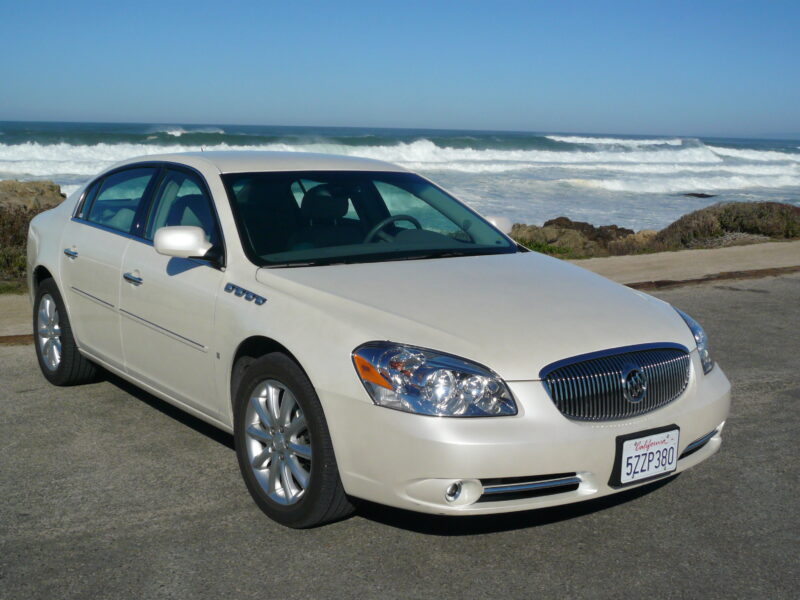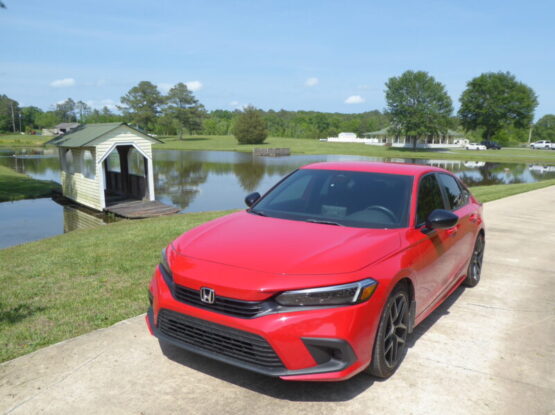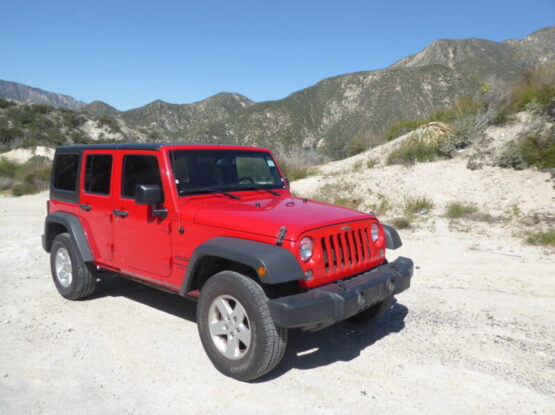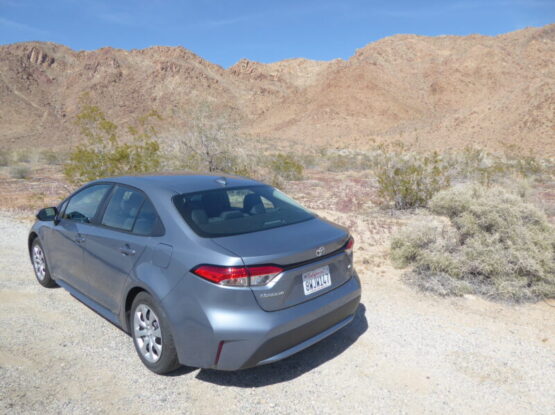In the collection of GM’s American-based brands, Buick has long been positioned as prioritising luxury over sportiness, but without being quite as plush, or as pricey as Top Dog Cadillac. The brand has had a loyal following for many years, but also something of a reputation, shared by Cadillac, of appealing to a significantly older than average stereotypical owner. The cars have evolved over the years, of course, in line with industry trends, so the massive “land yachts” of the 1960s and early 1970 saw an initial down-sizing in the late 70s and a more noticeable one in the late 1980s when front wheel was introduced across almost all the range. Under the skin, the Buick models shared platforms and most mechanical components with other GM model families but the styling remained unique to Buick and, for the sedan models at least, generally showing a cautious evolution from generation to generation. Even the model names have a longevity that goes back decades. Just Cadillac has made a concerted effort in recent times to try to appeal to a younger buyer with cars like the CTS, so Buick would now appear to following suit, albeit a little more cautiously. A foray into Minivans with the Rendezvous and the Terraza and Rainier crossovers has been followed by the appearance of some new model names for the sedans to try to make the point that the brand has changed. The upper mid-size LaCrosse of 2004, replacing the long-lived Century, was the first sign of this and then in 2005 at the Chicago Auto Show, the equally long-lived LeSabre name was retired when Buick announced a new full-sized sedan which they called Lucerne, named after the attractive city in Switzerland, we are told. With the disappearance of the Park Avenue at the same time, the Lucerne takes on the role of Buick’s flagship sedan. Under the skin, it is based on GM’s G platform and shares much with the Cadillac DTS, but the Lucerne does now look rather more modern and whilst retaining some familiar V6 and V8 engines, it has a full complement of the latest technology and safety features to try to broaden its appeal. When I arrived at Hertz’ San Francisco airport location, I was offered one as a rather nice upgrade from my corporate policy compliant booking and I was keen to test it out and see whether the new Buick had what it would take to appeal to a new generation of buyers or not.
My test car was in CXS spec which is the third of four different versions available. The first two come with the familiar 3.8 litre V6 engine, generates 197 bhp and 227 lb/ft of torque whilst the more costly CXS and Super have the 4.6 litre North Star engine that is to be found in the Cadillac DTS, putting out 275 bhp and 292 bhp respectively. In all cases, there is a rather old-fashioned sounding four speed automatic gearbox. Reports suggest that the V6 engine is not really up to the job of providing decent urge, but with 275 bhp and 290 lb/ft of torque from my test car, I did not feel unduly short changed performance wise. There is a rather muted burble to engine sound which tells you that you have a V8 though in fact that there is also easy visual identification as the V6 cars had three venti-ports on the front wings and the V8 cars have four. Whilst 275 bhp is a decent figure, it is still not enough to make this large and heavy car feel really brisk, some of the blame for which undoubtedly falls on that four speed transmission, which has widely space gear ratios and also, to help with refinement, a tall top gear. Despite that, fuel economy is not a strength and I did not see higher than 20 mpg (US) in my time with the Lucerne. Far better to enjoy the low noise levels and a feeling of serenity as you waft along. Preferably in a straight line, as this is just like Buicks of yore that is not designed for much driver enjoyment on twisty roads. The steering is super light and devoid of much feel and both handling and braking seem both subpar by modern standards. Pedal feel is fine, but quoted emergency panic-stop distances are the longest of any full-size sedan in this price range. The large turning circle can make the Lucerne quite cumbersome in tighter parking situations. Though the suspension gets progressively firmer with each trim level, a plush, serene ride is clearly every Lucerne’s top priority — and its highest achievement. Handling is apparently mediocre on the softly tuned Lucerne CXL model, with considerable body roll during more enthusiastic cornering, and whilst I did not experience this in such an extreme way, it is clear that even with the larger 18” wheels and Magnetic Rice Control that you get on the CXS version, the Lucerne has been designed more so that itrides smoothly and reacts to bumps with the gentle motions the brand’s older customers prefer. Standard across all 2008 Buick Lucerne models are antilock disc brakes, traction control, front-seat side airbags and full-length side curtain airbags. Stability control and brake assist are standard on the more costly CXS and Super, and optional on other models. In National Highway Traffic Safety Administration crash tests, the Lucerne earned a five-star rating (out of five) for protection of the driver and front passenger in frontal impacts. A four-star rating was given for side-impact protection of front and rear occupants. In Insurance Institute for Highway Safety tests, the Lucerne scored a “Good” rating (highest of four) in frontal-offset testing and an “Acceptable” (second highest) in the side-impact test.
The Lucerne’s cabin is handsome and cleanly styled, and boasts simple, friendly controls. Unfortunately, there are still a few low-grade plastic pieces thrown into the mix, and there is a lot of highly polished plastic that wants you to think it is wood, which has been a feature of how Americans do luxury cars for some time. There is some leather, too and it is generally soft and pleasant to the touch. That includes the steering wheel. There are three round dials directly in front of the driver, with a central speedometer, rev counter to the left and combined unit for fuel level and water temperature to the right. As is still the traditional GM way, there is only one column stalk, with wipers and indicators both operated from it, with lights on a dial on the dash. There are neat rows of buttons on either side of the steering wheel spokes for cruise control and audio repeaters. CXS spec brings you a Hardon Karmon sound system and is controlled by an audio unit that will be familiar from many other recent GM products. It offers XM satellite radio as well as an MP3 capable CD function and Bluetooth. Sound quality was satisfactory. Below this unit are two rotary dials for the dual zone automated climate control.
The Lucerne comes as standard with seats for five, but a split front bench seat can be ordered on the lower-level CX and CXL for six-passenger capacity. Room is abundant in any position, though seat comfort is only average, and the front heating devices can apparently make the seats torturously hot. Electric adjustment, with a memory function, of both front seats is standard on all Lucerne models, and the electrically adjustable steering wheel telescopes in/out as well as up/down, so I had no problems in getting the driving position I wanted.
There is plenty of space in the rear of the Lucerne, with generous leg room event when the front seats are set well back. There is only a modest central tunnel and the centre console does not come unduly far back. There is ample width here for three adults but especially as there is no central headrest, it may be that just two would prefer to sit here taking advantage of the drop-down central armrest with cup holders in the upper surface. There are map pockets on the back of the front seats and pockets on the doors for the inevitable bits and pieces to be stowed away.
There is a good-sized boot here. Official figures report the capacity as 17 cubic feet, and it is a nice regular shape and easy to access. There is a ski pass-through facility to allow a few long times to be accommodated. Inside the cabin there is a modest glovebox set down very low on the dash, an armrest cubby and there are pockets on the doors.
The 2008 Buick Lucerne is available in four trim levels: CX, CXL, CXS and Super. The CX comes with 16-inch alloy wheels, keyless entry, full power accessories, cruise control, power driver seat, OnStar telematics, an MP3-capable CD stereo with an auxiliary audio jack, satellite radio, steering-wheel audio controls and an auto-dimming rearview mirror. The CXL adds 17-inch alloy wheels, leather upholstery, dual-zone automatic climate control, heated outside mirrors and a power passenger seat. The CXS comes with 18-inch alloy wheels, the Magnetic Ride Control adaptive suspension, driver-seat memory, heated front seats, a power tilt-telescoping steering wheel, a Harman Kardon audio system, a heated steering wheel, rain-sensing wipers, rear parking sensors and remote vehicle start. New for 2008, the Lucerne Super adds a more powerful version of the V8 engine; a firmer version of the adaptive suspension; unique wheels; chrome waterfall grille and other Super-specific exterior styling touches; leather-wrapped instrument panel and a heated wood steering wheel. Optional on all Lucernes are a CD changer, a sunroof, a lane departure warning system and a system that warns the driver when other vehicles enter the Buick’s blind spots. Available on all but the base CX model are heated and cooled seats and a navigation system, while the CX and CXL can be equipped with a front bench seat that increases capacity to six people. Whilst the CXS and the Super with their standard V8 engines will have their appeal, the former costs nearly $37,000, vaulting the Lucerne into luxury-class territory when it lacks common upscale features like xenon headlights, power-adjustable pedals and Bluetooth connectivity. At that price, whilst the Lucerne may please brand loyalists, it may be over-reaching itself. Those in search of more refined performance and digestible pricing would be wise to look at other large sedans like the Chrysler 300, Hyundai Azera, Toyota Avalon and the Ford Taurus/Mercury Sable twins, all of which offer better driving dynamics, more feature content and a more refined overall feel. Low pricing on the Azera, Taurus and Sable makes these cars much better value as well. That being so, then possibly the CXL may be the sweeter spot of the range.
The Lucerne has quite a standard to uphold. As Buick’s flagship car, it represents the American brand most synonymous with big sedans. It also carries the responsibility of retaining the loyal customer base that likes Buicks just the way they’ve always been: soft, roomy and comfy. For those buyers, this full-size sedan lands pretty close to the target. The Lucerne is one of the largest saloon cars on the road, featuring enough room for five adults (six with the optional front bench seat) and an interior with easy-to-use controls.. Finally, Buick stands above much of its import-brand competition by offering a V8 engine in addition to a V6. But, in purely objective terms, there are a number of cars that are “better” than the Lucerne. Probably just about any non-US originated rival, if truth be told. If you are after a slice of true American motoring 2008-style, then the Lucerne is not without merit. I can’t help feeling that, although it makes the car on the pricey side, part of the appeal comes from that 4.6 litre NorthStar engine, which although relaxed and a bit lazy feeling, is smooth and refined (as long as you don’t work it too hard), very much like a throw-back to the way America always used to do cars. Comfort prioritised over driving dynamics, a large footprint that whilst roomy does not quite deliver the space inside you might expect and a very transatlantic take on what luxury trim should look like all combine to make this feel like a modern take on an old-school American car in a way that even some of its domestic rivals don’t quite do any more. Initially, it seems that this was what buyers wanted, too, as in its first year, it exceeded 90,000 sales. Quite how many of these from the different demographic that Buick were seeking is harder to tell, and I suspect that it may be that this car has sold to those who have always bought a Buick as opposed to many conquest sales. So, whilst there plenty of cars that do things “better” than the Lucerne, it is worth a look and if you get the chance of one at the rental car counter, take it as perhaps the last gasp of a dying breed of large American sedans.

















































































